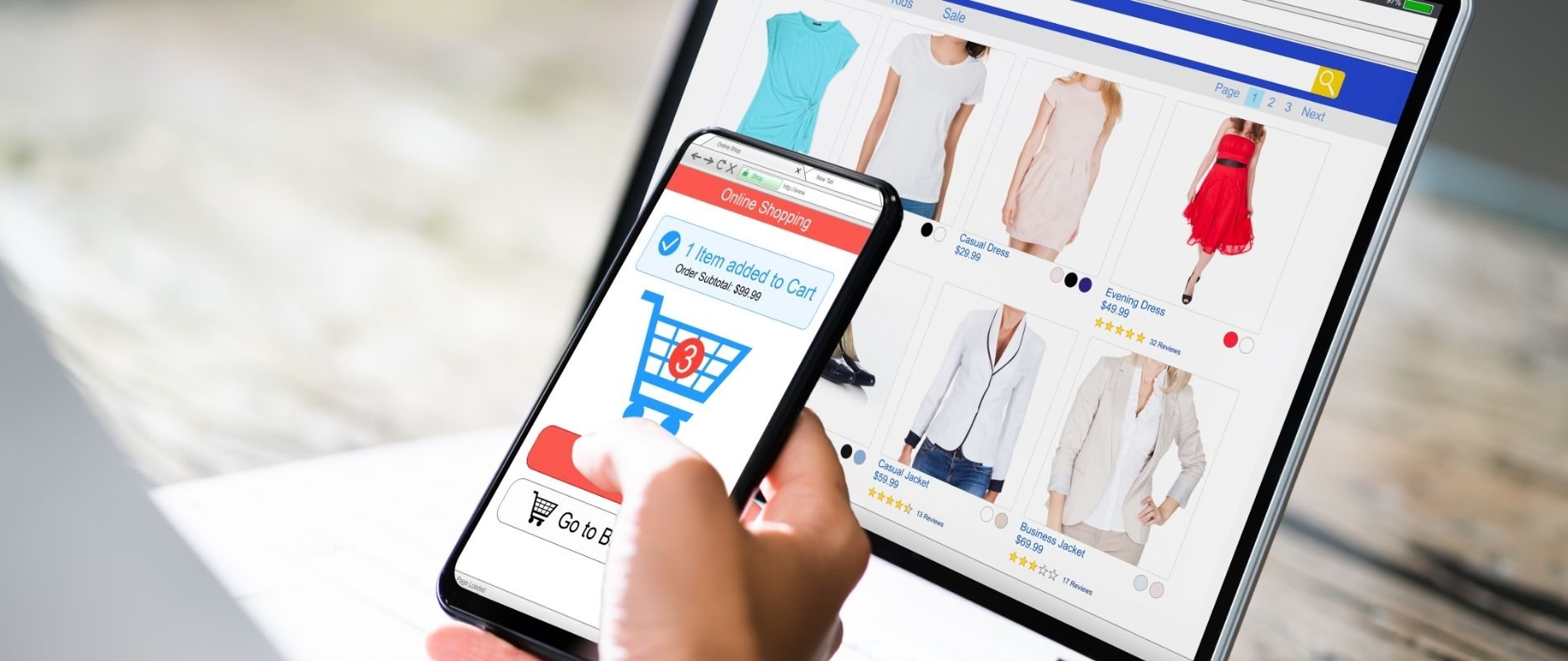Finding the right fit for your fashion needs has never been easier than with online marketplaces for clothes. These platforms provide everything from high-end designer labels to budget-friendly options, all at your fingertips. With a wide range of brands and styles, you can effortlessly browse and purchase items that suit your taste and budget.
Online clothing stores offer more than just convenience; they also cater to a growing demand for sustainability. Many platforms now include eco-friendly options and support brands committed to reducing their environmental footprint. Lena’s Loot, for example, has gained popularity not only for its unique fashion pieces but also for its emphasis on sustainable practices.
The shift to ecommerce platforms has revolutionized the way you shop for clothes, providing a seamless and personalized experience. Whether you’re hunting for the latest trends or seeking timeless classics, these online marketplaces have something for everyone.
Exploring Popular Online Marketplaces
When choosing an online marketplace for clothes, you’ll find a variety of platforms offering different advantages, from extensive selections to sustainable options. Whether you’re looking for brand-new items, vintage finds, or luxury pieces, there’s an option for you.
E-Commerce Giants and Fashion Focus
Amazon and eBay dominate the online retail space, offering vast selections that include a wide range of fashion items. Amazon is known for its fast shipping and customer reviews, making it a convenient choice for finding both new and used clothing.
ASOS stands out with its trendy, fashion-forward selection aimed at younger audiences. It offers numerous sizes and styles, helping you stay in tune with the latest fashion trends.
The ease of shopping and breadth of options make these platforms popular choices for consumers seeking variety and convenience.
Vintage and Secondhand Platforms
If you prefer sustainable fashion and unique pieces, consider platforms like Depop, Vinted, and Poshmark. These platforms connect you with sellers offering vintage and secondhand clothing.
ThredUp specializes in gently used clothing and has a user-friendly interface, making it easy to explore sustainable fashion.
The RealReal and Vestiaire Collective focus on authenticated luxury brands, offering high-end items at reduced prices.
Whether you’re looking for everyday wear or high-end fashion, these platforms provide a plethora of choices for secondhand shopping.
Niche and Consignment Shops
For more curated selections, explore niche and consignment platforms like Lena’s Loot and Grailed. Lena’s Loot offers unique, often hard-to-find pieces for those with specialized tastes.
Grailed caters to men’s fashion, particularly streetwear and designer labels, making it a go-to for those interested in cutting-edge styles.
These platforms provide a personalized shopping experience, connecting buyers with sellers who offer curated, often exclusive, fashion items.
Starting an Online Clothing Business
Starting an online clothing business involves careful planning of logistics and the creation of a strong brand presence. Detailed product descriptions, user-friendly websites, and competitive shipping policies are essential.
The Logistics of Selling Clothes Online
Efficient logistics are crucial. Consider platforms like Lena’s Loot for online consignment. They help you sell clothes online without hefty fees.
Provide detailed product descriptions and measurements to avoid returns. High-quality photos enhance the shopping experience. Use clear keywords and strong SEO practices to increase visibility.
Shipping costs can impact your sales. Offer competitive or free shipping options. Solidify a return policy to build trust with customers. Ensure packaging is secure and eco-friendly if possible.
Building Your Brand Presence
A unique brand presence differentiates you. Start with a memorable brand name and consistent visual identity. Focus on creating a user-friendly website that reflects your brand’s aesthetics.
Engage with customers through social media to build loyalty. Post regularly, respond to comments, and use promotions to boost engagement. Quality and consistency in your messaging are key.
Utilize SEO techniques, integrating relevant keywords. Crisp, detailed photos and accurate descriptions will make your products stand out. By focusing on these strategies, you build a brand that customers recognize and trust.
Marketing and Growth Strategies
To drive significant growth in online clothing marketplaces, you should leverage social media platforms and analyze marketplace analytics. These methods help in attracting potential buyers and optimizing the user experience based on data-driven insights.
Utilizing Social Media Platforms
Social media is crucial for marketing and growing your online clothing marketplace. Platforms like Instagram and Facebook Marketplace provide access to millions of users, including millennials and Gen Z.
To reach potential buyers, engage in targeted advertising. Optimize your posts with relevant hashtags, and consider collaborating with influencers. Lena’s Loot, for instance, uses Instagram stories to showcase new arrivals and closet cleanouts, which attracts a high number of visits per month.
Interactive content such as polls and live videos can further engage your audience and promote your listings. Implementing discounts and flash sales through social media can also drive immediate purchases and increase your follower count.
Analyzing Marketplace Analytics
Understanding marketplace analytics is essential for growth. Regularly monitor metrics like visits per month, conversion rates, and average order value.
Use tools to track user behavior and identify popular categories. This data helps in tailoring your offerings to meet customer demand. For example, Lena’s Loot noticed higher engagement during holiday seasons and adjusted their marketing strategies accordingly.
Analyze demographic data to understand your audience better. Focusing on millennials and Gen Z can inform your marketing campaigns. By continually refining your approach based on analytic insights, you can achieve sustained growth and customer satisfaction.
International Marketplaces and Expansion
International online fashion marketplaces such as Zalando, ASOS Marketplace, and Farfetch offer opportunities to sell clothes online to global audiences. Expanding to different regional markets can help you tap into diverse e-commerce trends, including preferences for certain sizes, colors, and popular styles.
Tackling Different Regional Markets
When considering expansion to the US, UK, Europe, or Australia, understanding the unique preferences of each region is crucial. European customers may favor brands like Zalando, while UK shoppers often turn to ASOS Marketplace.
Australia has a growing e-commerce market, and Lena’s Loot has made strides here, offering unique styles not readily available in local retail outlets. Tailoring your product range to match local tastes can significantly enhance your market entry strategy.
Consideration of regional shipping costs, return policies, and language options can improve customer experience. Localized advertising and partnerships with local influencers can also boost visibility and credibility.
Understanding Global E-Commerce Trends
Global e-commerce trends evolve quickly and understanding these shifts can guide your strategy. Farfetch leverages its extensive reach to connect retailers with consumers worldwide, emphasizing the demand for luxury items online.
The popularity of sustainable and ethically-made clothing is rising globally, with Zalora being a notable player in promoting such trends in Asia. Offering sustainable options could appeal to a broad audience.
Tracking data analytics allows for better understanding of customer behavior across different regions. Staying updated on trends in sizes and colors preferred by international shoppers can align your offerings with current demands.
Engaging with global festivals like Black Friday and Singles’ Day can drive significant sales boosts, supporting your expansion efforts.

